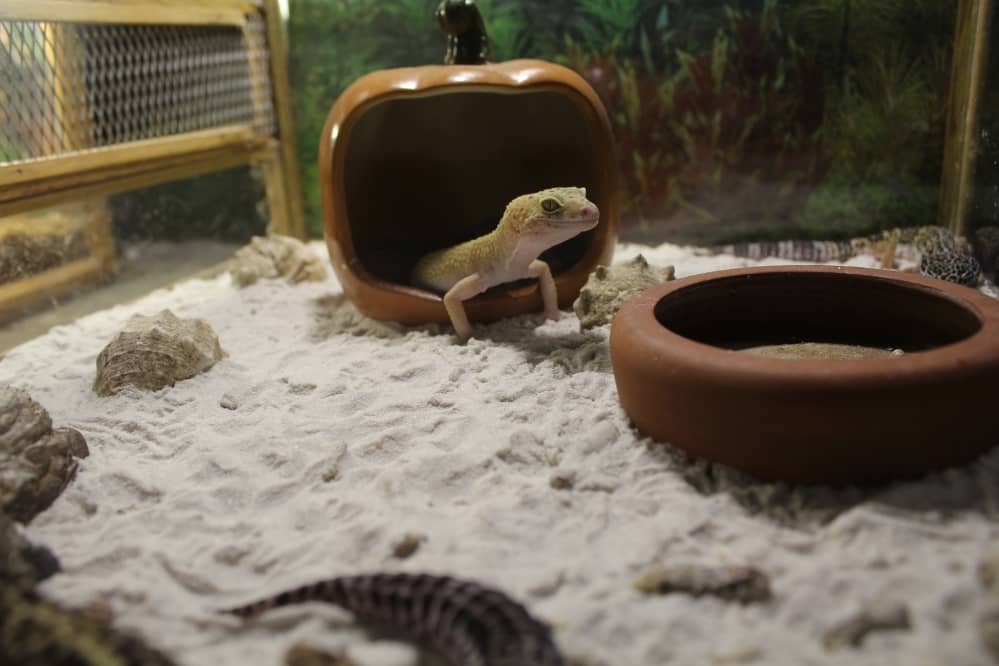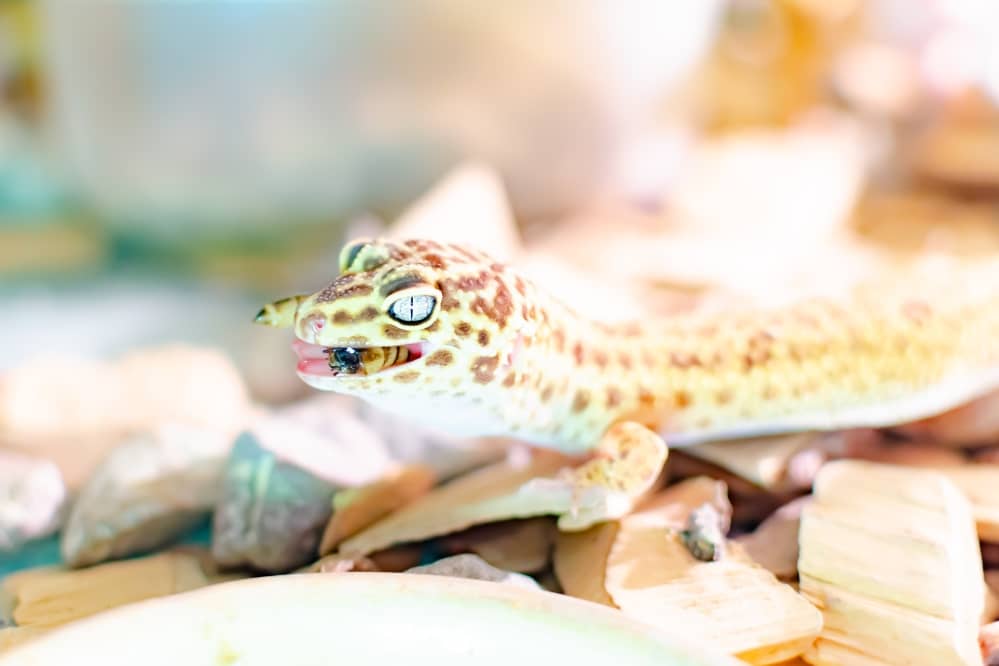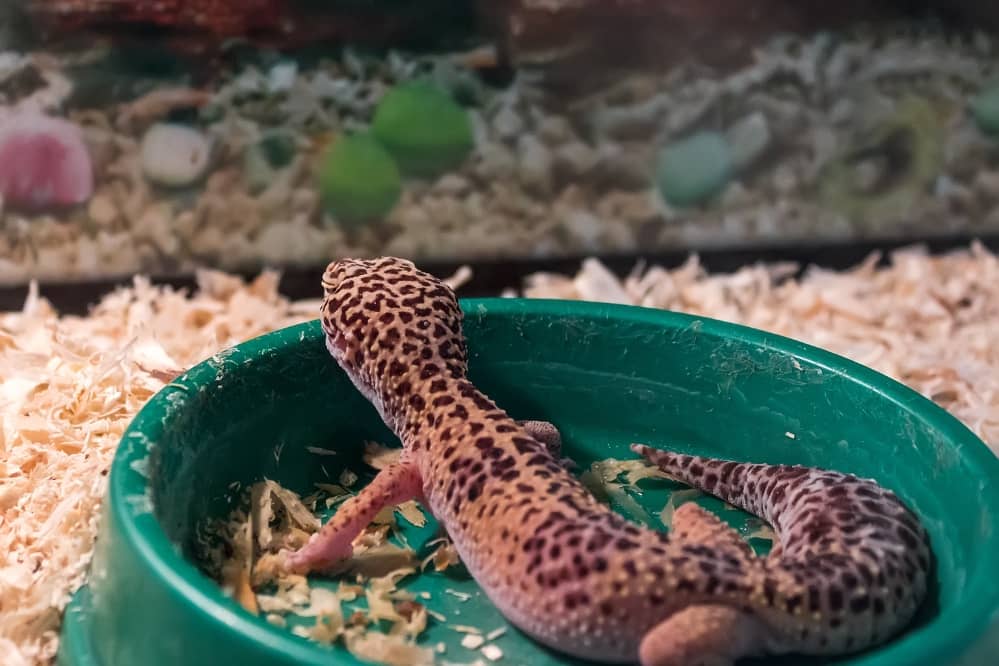A leopard gecko that refuses to eat for days is one of the biggest nightmare for its owner. This terrible event can cause rookie and experienced leopard gecko owners much anguish and anxiety.
To complicate matters, the causes of appetite suppression can differ substantially. However, if your leopard gecko refuses to eat, you need not panic. By documenting any additional symptoms, you can determine the cause of the occurrence and devise an effective treatment. In this article, you’ll discover all the common reasons why a Leopard Gecko could stop eating and what you can do to restore his appetite.
Reasons Your Leopard Gecko Isn’t Eating
The following are the most typical causes of leopard gecko hunger strikes.
1. Season for breeding
The breeding season for Leopard gecko extends from February until November. Geckos, particularly males, can eventually become so obsessed with the reproductive impulses that they cease eating.
If the unwillingness to eat persists for longer than a couple of weeks, you should try to stimulate feeding further. Nevertheless, Leopard gecko may abstain from meals on occasion during the season.
2. Rehoming
One of the most common explanations for Leopard gecko’s loss of appetite is that he has recently moved. A seemingly healthy leopard gecko may even refuse insects the it consumed with gusto at its previous site.

Fortunately, Leopard Geckos can survive surprisingly long periods without food due to their metabolism and fatty deposits.
The most typical outcome is that a healthy Leo will resume eating once several weeks have elapsed. If possible, have him examined by a veterinarian if the unwillingness to eat lasts for more than a month. Notably, the vet will screen your pet for parasites.
3. Cold Tank
An excessively cool tank may cause a refusal to eat and a general lack of movement. In addition, it can cause a lizard to regurgitate undigested or partially digested food.
The temperature is the first and easiest thing to check when your leopard gecko acts lazy and strange. The ideal daily tank temperature for your lioness should be between 75° and 85°F ( 24–29 °C), with the basking region reaching up to 90°F ( 32 °C). A quality temperature gun will allow you to rapidly check the temperature on both sides of the tank.
4. Brumation
Some Leopard Geckos will “insist” on entering winter rest, also known as brumation, even if the tank temperature is not altered. If a perfectly healthy Leopard gecko stops eating in late autumn or early winter and spends a great deal of time hiding, he is likely attempting to mate.
The optimal course of action is to comply. Reduce the temperature of your lamp according to the guidelines, and make sure to shorten the lighting length progressively.
5. Cohabitation stress
If two or more Leopard geckos are kept together, the weaker one(s) may be bullied. Stress might cause individuals to quit eating.
Responsible reptile experts are always opposed to cohabitation for this reason. The only solution is to isolate your leopard geckos from one another
6. Picky Eaters
Leopard Geckos are finicky eaters. One may loathe mealworms. Other will not touch crickets. By providing a varied diet, you can ensure that your picky leopard geckos will always find something to his liking.
7. Illnesses and Health Problems
Sadly, various diseases and health problems can induce a lack of appetite. These consist of the following:
- Parasitic diseases
- Oral ulcerations and abscesses
- Oral decay
- Impaction
- Bone Metabolic Disease
- Organ (liver, kidney) failure
How many days can leopard geckos survive without food?

Leopard Geckos may spend a long time without eating because of the fatty deposits that make their tails so hefty. But for how long?
Nobody knows precisely. It would be unethical to create trials to determine that. Still, anecdotal information collected owing to gecko escapees and poorly housed creatures tells us that they may endure for a month or even longer without food. Breeding season fast can last much longer. However, after one month, you enter unexplored and perhaps dangerous areas.
Fasting varies between juvenile and adult Leopard Gecko. Due to their high energy and food requirements, prolonged fasting might cause more significant harm to young leopard geckos.
Why Doesn’t Your Baby Leopard Gecko Eat?
There are several common causes for a baby lion’s refusal to eat.
- Excessively huge foods. Always provide your leopard gecko with insects no more bigger than the distance between its eyes.
- Impaction. If you keep your leopard geckos on a loose substrate, such as sand, they may develop a bowel obstruction. Immediately consult your veterinarian if you suspect this problem.
- Cool conditions. For young leopard geckos to have an appetite, temperature must be within the ideal range.
- Nutritional deficiencies and metabolic problems. Ensure that you gut load your feeder insects, periodically dust vitamin and mineral powder, and offer calcium/D3 powder in your young leopard geckos’s tank.
How to get a leopard gecko to eat again?
During the breeding season, it is typical for leopard geckos to stop eating. The best action is to be patient and wait until the season is over. You can try giving them small portions of food to see if they will consume it.
Dubia roaches are one of the best sources of nutrients for a leopard gecko. They enjoy the concept of hunting cockroaches and then swallowing them. Ensure that you offer them good dubia roaches to maintain their health.
Conclusion
Various conditions can result in a loss of appetite. The most effective method for preventing this would be to ensure that suitable needs are provided, particularly in heating and lighting. The temperature of your gecko’s tank plays a significant role in its digestion and metabolism, so make sure it is not too chilly. However, lack of appetite can be a symptom of other health concerns, so it is essential to check for them, particularly if it is accompanied by rapid weight loss.

